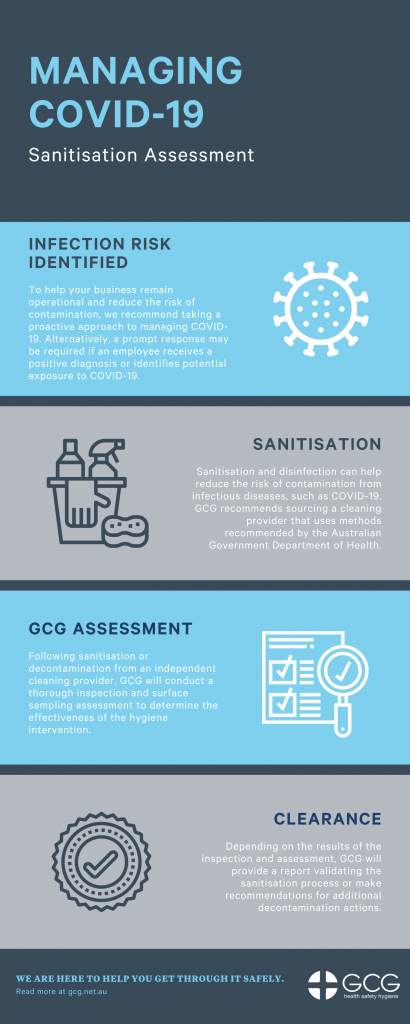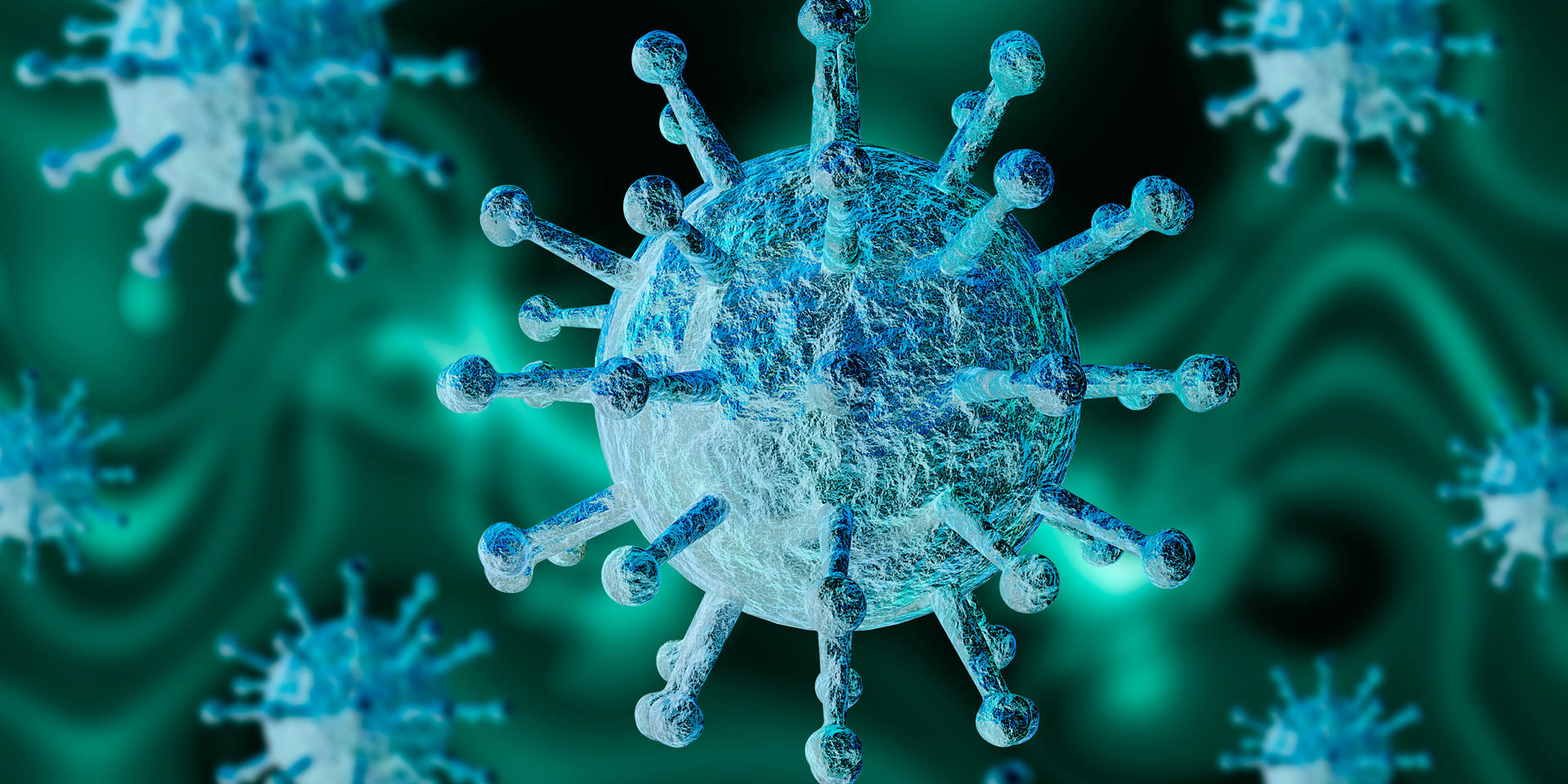Inspection and Assessment
Employers have an obligation to manage the health and safety risks posed by the COVID-19 infection as far as reasonably practicable. While every employer’s response will be tailored to its circumstances, some sites may require thorough decontamination of high risk/traffic areas as a precaution or if the area has been potentially exposed to the virus. Conducting a thorough sanitisation assessment of sites prior to resumption of work activity decreases the chance of spreading infectious disease and placing employees at risk. To safely sanitise and disinfect a location with known or suspected COVID-19 exposure, GCG recommends utilising an independent cleaning provider that follows decontamination methods outlined by State and Federal Government bodies, including the Department of Health. Following the proactive or reactive decontamination and disinfection, GCG will conduct a thorough clearance inspection and assessment to determine the effectiveness of the hygiene intervention. GCG uses specialised scientific testing equipment and a range of qualitative assessment methods to review the site. Depending on the results, GCG will provide clearance for the site or make recommendations around additional decontamination actions. Proactive decontamination and clearances are suggested for critical assets to keep operational and mobilised. This reduces risk by disinfecting and validating the cleanliness of high touch surfaces to reduce the chances of second contact and transmission. This control can form part of an overall risk reduction strategy, and could be considered for critical operational locations such as:- Operational vehicles such as trucks, cranes, light vehicles etc
- Critical office infrastructure
- Public transport such as buses, trains
- Control rooms
- Workforce lunchrooms/crib rooms
What is COVID-19?
COVID-19 is a respiratory illness caused by a new virus. Symptoms include fever, coughing, sore throat and shortness of breath. The virus can spread from person to person, but good hygiene can prevent infection. The best way to prevent and slow down transmission is by washing your hands or using an alcohol based rub frequently and not touching your face. On 11 March 2020 the World Health Organisation (WHO) declared the outbreak of COVID-19 a pandemic, and the emergency has continued to escalate.
Why choose GCG?
From a business perspective, GCG recognises the emphasis to run business operations smoothly to ensure companies benefit from continued operations and profit gain. A lack of both safety and hygiene planning at the workplace can ensue challenges around the workflow and possibly allow long-term health effects at your company. This is why the Consultants at GCG take pride in producing quality yet effective work to ensure clients hold a clear advantage – to commence operations as per usual and to keep the issue contained and/or eliminated. The main part of our job is to figure out the clients’ requirements based on size, scope, location, and budget to fully understand what is expected. GCG’s hygiene consultants are professionals in the industry who are certified with the Australian Institute of Occupational Hygienists (AIOH).